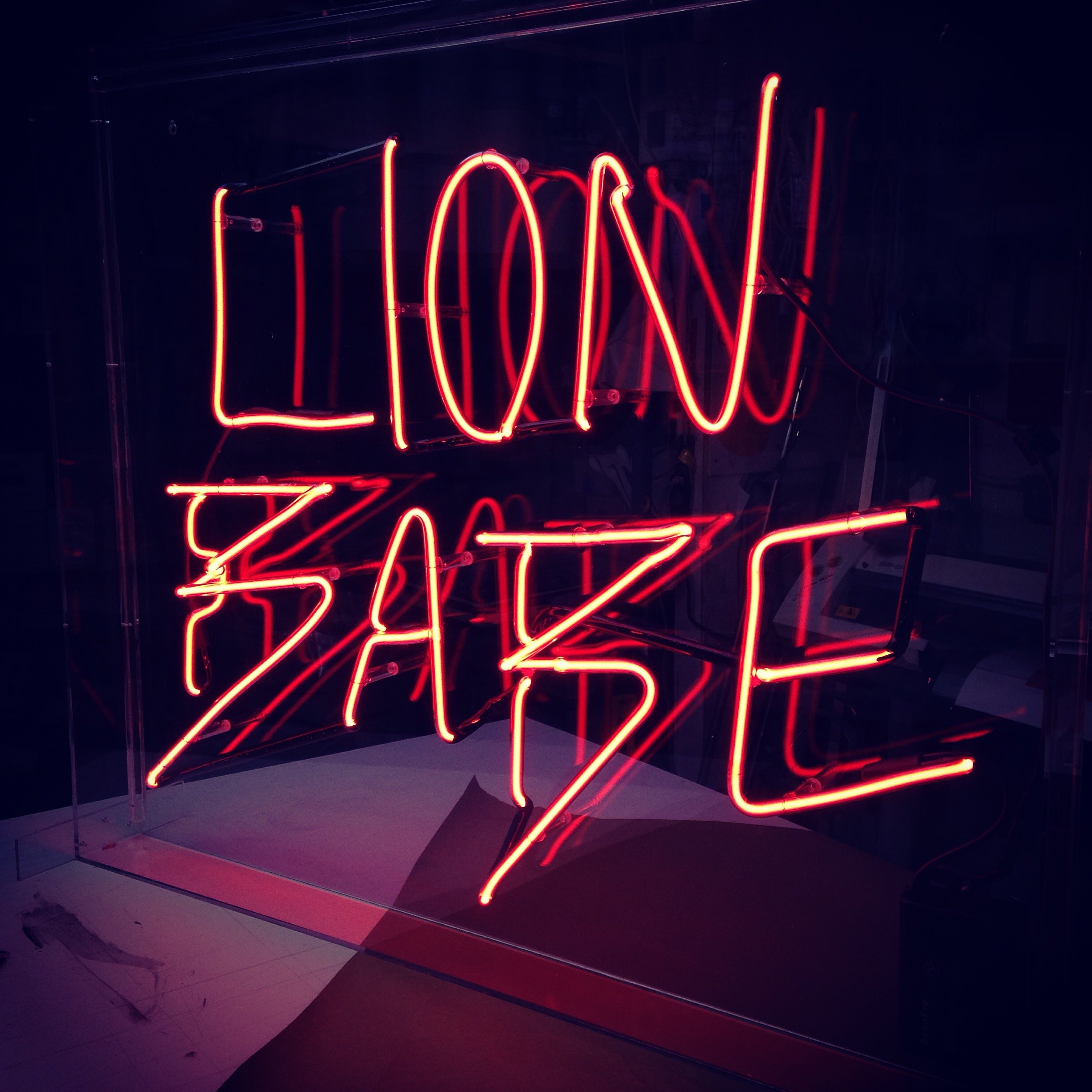Neon has been the gold standard for eye catching illuminated signage since it was first popularized in the 1910s. With the increasing availability of LED signs, many vendors use the term “Neon” as a way to refer both to glass neon LED neon. There are big differences between the two, and it’s important to understand them before making a decision on what kind of sign to design for or purchase.
Material aesthetic
Glass neon is made from hand bent glass tubes that are illuminated 360º, giving it a unique timeless artisanal quality that is unmistakable. The tubes are bent backwards and around to form shapes and letters, and posted a short distance away from the mounting substrate, giving it a sculptural quality that rewards the eye when viewed from different angles.
Neon sign made for a film set
Designing for glass neon is like making a line drawing without picking up your pencil - for the design to work it has to either be made from one continuous tube or from several sections of tube connected by electrodes and wire. The sections of tubing that aren’t meant to stay in the final design are simply bent back and painted out.
LED neon sign for liquor company
LED neon on the other hand, is made from LED tape installed into engraved acrylic with a flexible silicone channel embedded over it to diffuse the light. The LED and silicone need to be embedded or glued into the acrylic to hold their shape, so signs made this way can only provide up to 180º of illumination. The low voltage wire connections between shapes and letters are thin and discrete, and many people see LED neon as a simpler way to execute their design without the painted out tubes and larger wire connections in the background of glass neon.
Color
Glass neon has fewer commercially available colors than LED neon, but they are more highly saturated and vibrant. The color of glass neon comes from the color of the gas it’s pumped with, the color of the phosphor coating, and the color of the glass itself - these can have many different combinations and can produce very rich vibrant light. LED neon gets its color from the color of the LED strip and the color of the silicone that diffuses it. One major advantage of LED neon is RGB control, which is not possible in glass neon except through animating stacked neon tubes.
Glass neon in an acrylic box for a performing artist
Glass neon colors can also appear to have dimension to them when in clear or colored uncoated tubes, because the color of the gas itself is seen refracted through the color of the glass. LED neon on the other hand, while having more options and greater versatility when it comes to dimming and programming, are generally more subdued and can sometimes look spotty or dim at the connection points.
Cost
LED neon is significantly cheaper than glass neon - this is due to the cheaper material cost as well as low-skill labor involved in LED production. Glass neon tube benders are highly skilled craftsmen/women that need training and years of experience to work in a production shop. With LED neon, the design is engraved with a CNC router, and anyone with introductory skill level in LED wiring and soldering can assemble from there with the right tools and hardware.
Example of and LED neon sign during the assembly process
Fragility
Glass neon is fragile, and requires special handling for transportation, shipping, and installation. Once installed, glass neon remains fragile and can be an expensive fix if it breaks. LED neon on the other hand can be shipped, handled, and installed with very little risk of damage.
Neon packed in a foam lined wooden shipping crate
The fragility of glass neon is one of the main contributing factors to its higher cost compared with LED neon. Glass neon signs have to be very well protected during shipping, which adds to size and weight of the load, and does not fully eliminate the risk of breakage. LED neon can be shipped in lightweight, small cardboard boxes and have an extremely low chance of damage during shipping.
Versatility
Glass neon tubing is structurally rigid once bent, so it needs minimal support compared with LED neon. Neon can be mounted to a panel or frame, or directly to a wall, as well as mounted around 3D sculptural shapes.
Glass neon mounted to sculpted bust for a Manhattan retail display
LED neon on the other hand, needs to be either embedded or glued to a substrate - otherwise the silicone will not retain its shape. This limits LED neon to “flat” designs backed in a substrate, almost always clear acrylic. Glass neon has sculptural applications that can give it a more minimal appearance when designed with its material qualities in mind.
Glass neon chandelier in our Brooklyn office
Overview
Glass neon is undoubtedly a higher quality and more versatile product overall, but there are added costs that come along with that. Clients that don’t necessarily care for that unique look and feel of neon or don’t have a 3 dimensional application might be better off going with the lower cost option of LED neon. In applications where RGB control or complex animation is needed, LED is definitely the better option. Glass neon will always have a timeless appeal that can not be accurately imitated in LED for those applications where light quality and aesthetic are crucial.







